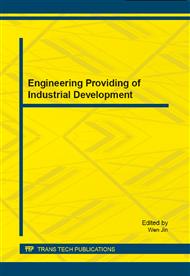[1]
Andrey P: Segmentation d'images par algorithmes génétiques, PhD Thesis, Paris 7 University, France, (1999).
Google Scholar
[2]
Harik G.R., Lobo F.G. & Goldberg D. E: The compact genetic algorithm, IEEE World Congress on Computational Intelligence, pp.523-528, May (1998).
DOI: 10.1109/icec.1998.700083
Google Scholar
[3]
Holland J. H: Adaptation in natural and artificial systems, Michigan University Press, (1975).
Google Scholar
[4]
Johan D: Métaheuristiques pour l'optimisation difficile, Eyrolles Edition, France, (2003).
Google Scholar
[5]
Juan D., Tang S., Jiang T. & Lu Z: Intensity–based robust similarity for multimodal image registration, International Journal of Computer Mathematics, vol. 83, n° 1, Jan. 2006, pp.49-57.
DOI: 10.1080/00207160500112944
Google Scholar
[6]
Kirkpatrick S., Gelatt C.D. & Vecchi M. P: Optimisation by simulated annealing, Science, volume 220, numéro 4598, pp.671-680, (1983).
DOI: 10.1126/science.220.4598.671
Google Scholar
[7]
Li W. & Leung H: A maximum likelihood approach for image registration using control point and intensity, IEEE Trans. on Image Processing, vol. 13, Issue 8, pp.1115-1127, August (2004).
DOI: 10.1109/tip.2004.828435
Google Scholar
[8]
Mendonca R.S. & Caloba L. P: New simulated annealing algorithms, proceedings ISCAS '97 vol. 3, pp.1668-1671.
Google Scholar
[9]
Miramond B: Méthodes d'optimisation pour le partitionnement logiciel/matériel de systèmes à description multi-modèles, PhD Thesis, Evry University, France, Décembre (2003).
Google Scholar
[10]
Musse O., Heitz F. & Armspatch J. P: Topology preserving deformable image matching using constrained hierarchical parametric models, International Conf. On Image Processing, vol. 1, pp.505-508, Sep. (2000).
DOI: 10.1109/icip.2000.901006
Google Scholar
[11]
Salomon A: Etude de la parallélisation de méthodes heuristiques d'optimisation combinatoire : application au recalage d'images médicales, PhD Thesis, Louis Pasteur University, Strasbourg, France, Décembre (2001).
Google Scholar
[12]
Talbi H., Dra A. & Batouche M: A new quantum inspired genetic algorithm for solving the salesman problem, IEEE international Conf. On Industrial Technology, 8-10 December 2004, vol. 3, pp.1192-1197.
DOI: 10.1109/icit.2004.1490730
Google Scholar
[13]
Zitova B. & Flusser J: Image registration methods: a survey, Image and Vision Computing 21 (2003) 977–1000.
DOI: 10.1016/s0262-8856(03)00137-9
Google Scholar


